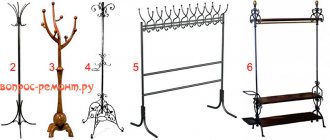Dahlias Gallery Art Deco
cdn.shopify.com
An ornamental variety, stems 30-40 cm high. With proper agricultural technology, the plant can begin to bloom in May, and end this period in the fall. The inflorescences are tubular and reed, orange-pink, apricot or burgundy, 5-10 cm in diameter. With proper care, Gallery Art Deco dahlias are highly resistant to diseases and pests.
Decorative varieties of dahlias are also called border varieties, because due to the size of the bushes they can be planted not only in flower beds (mainly along the edges), but also along paths - instead of a border. And these flowers do not need to be tied or pinched.
Types of dahlias
Breeders today know several thousand varieties of dahlias. There are varietal specimens of the most incredible colors and petal shapes. There are small compact bushes and dahlias - giants that grow 1–1.2 m in height.
Of the most popular plant species, the following varieties are distinguished:
- collar;
- anemone-shaped;
- needle-shaped;
- semi-acicular;
- spherical;
- nymphaeal;
- peony-shaped.
Varieties of collared dahlias have different shapes and sizes of petals per flower. Towards the middle they may be small and rolled up, while the outer ones will be long and flat in shape. Anemone-shaped and collared dahlias are very similar in structure. Common to both species is the presence in the center of the flower of short double or cone-shaped petals and their framing by several rows of larger reed petals.
Collar view
Anemone species
Needle dahlias are especially beautiful; they attract attention with their sophisticated shape. Their thin petals, twisted into a tube, give the appearance of these flowers a special chic. The length of the petals of each dahlia variety is different. In semi-needle varieties, the petals are cone-shaped. Ball-shaped dahlias have especially large flowers. These flowers have the largest inflorescence diameter. The flower petals are dense, rolled up.
Needle-like appearance
Globular appearance
Nymphal species
Peony look
The flat-shaped nymphaeal varieties of this flower differ sharply from all other types of dahlias. Most often, short fluffy petals are located in the center of the inflorescence, surrounded by flat, wide rows of petals. Peony dahlias received the name of their species for their external resemblance to peonies. They can differ in the large size of the inflorescence, although at the same time there are varieties of this species with flowers from 10 cm in diameter.
Dahlias are not at all difficult to care for, and if one day this extraordinary flower appears in the garden plot, it will be difficult to refuse to plant it in future years. Few people remain indifferent to the bright flowering of this luxurious plant.
Silver ribbon
Silver ribbon dahlias are a low-growing and unpretentious variety with early flowering. The name of the unusual variety arose because of the completely white color of the petals with a silvery sheen. What is remarkable about the variety:
- short height – up to 40 cm;
- leaves are opposite, pinnate;
- excess green mass - it is necessary to regularly remove excess;
- small but multiple inflorescences – up to 5 cm in diameter;
- silver-white color of oval marginal petals;
- 2-3 raised stripes on the petals;
- bright yellow center.
Silver ribbon dahlias are grown mainly as an annual. Their seeds give excellent germination when grown in seedlings, and the sprouts are sent to open ground in mid-May. With this approach, flowering begins in early July.
Caring for dahlias
Dahlias are perennial and long-flowering plants that do not require particularly complex care, but you still need to adhere to a number of rules and tricks.
Watering.
For watering, it is enough to wet the soil by about 20–30 cm just a couple of times a week. Based on specific weather conditions, for example, during hot periods without rain, watering needs to be increased or more frequent. Be careful not to allow stagnant water, as this will cause the roots to rot.
Illumination.
Dahlias require at least six hours of daylight, since they came to us from warm countries. But, thanks to breeders, not only brightly lit, but also darker areas are suitable for planting. They live well in the shade of larger plants, but this negatively affects flowering.
Temperature.
Despite fairly good cold resistance, these flowers still cannot overwinter in the ground in our climate. They feel great until the first frost, but for the winter they should be removed from the ground.
Fertilizers and fertilizing.
Fertilize dahlias with low-nitrogen fertilizers, as nitrogen causes the bush to overgrow leaves, negatively affects flowering and creates very weak tubers. They dry out or rot during storage. That is why experts recommend fertilizers with sufficient phosphorus and potassium content. Feed the plant once a month, and if it is planted in nutritious soil, then there is no need for fertilizers. In addition, if you overfeed a flower, it will form very weak tubers that are unsuitable for propagation.
Main types of flower
At the moment, there are more than 15 thousand different varieties, presented in all sorts of colors and shapes, but breeders have adopted a classification that divides the huge variety into only 11 main groups.
Simple dahlias
They are represented by shrubs of different sizes: dwarf - up to 25 cm, medium - from 25 to 30, tall - up to 50 cm. The petals are arranged in one row, which is a recognizable and distinctive feature of simple (or, as they are also called, non-double) dahlias.
Anemone dahlias
As you can see from the name, this group is similar to anemones. The main difference is terry. You can recognize them by their yellow and tubular core, as well as by their petals arranged in several rows.
Collared dahlias
They have fairly tall bushes, from about 40 to 70 cm. Petals sprout in a couple of rows, often of different sizes and colors. Their lower level is longer than the upper one - this feature will allow us to identify this category. When choosing these types, pay attention to La Gioconda, First-Class Girl, or Danko’s Heart.
Peony dahlias
The result of crossing dahlias and peonies. These are semi-double flowers that have several rows of petals and a bright yellow center. Prominent representatives of the variety: Danko, Aurora Volley or Eternal Flame - a favorite option for country flower beds.
Decorative dahlias
An extremely popular and diverse group, which is represented by voluminous and lush flowers. There are both low-growing varieties - Ecstasy or Zingaro, and tall varieties - Rosabela, Arabian Night or Orange.
Globular dahlias
An interesting and varied variety, presented in a wide palette of shades. It has double and round flowers. Low representatives of this variety reach 40 cm, and tall ones - up to 1.5 m. Depending on the size of the plant, the diameter of the flowers varies from 7 to 20 cm. This group includes: Evelyn, Peter or Sandra.
Pompon dahlias
Short pom-pom dahlias look great when planted in several rows, while larger ones can create a stunning bouquet. They also have ball-shaped flowers, but they are flattened compared to the previous group. The height of the bushes can be from 50 to 120 cm. Pompoms grow to medium sizes, namely 4–10 cm.
Cactus dahlias
They got their name thanks to the narrow flowers twisted into tubes, which from a distance look like thorns. They are represented by a huge variety of shades and sizes of shrubs. Inflorescences in this group range from 6 to 35 cm, and bushes can reach a height of up to 2 m. Interesting and popular varieties: Black Wizard, Florida and Ambition.
Semi-cactus dahlias
Breeders have embodied in this group all the best features of cactus and decorative dahlias. A very popular and interesting variety that attracts more and more lovers of beautiful flower beds. Well-known representatives of this category: Island Deline, Verda, Meteor, Wiki.
Nymphaeum dahlias
Very beautiful and delicate double flowers, which in shape very much resemble water lilies. Famous representatives: Angora, Leo Gelito, Kens Flame, etc.
Mixed dahlias
This group includes dahlias that, according to their main criteria, do not fall into the listed varieties, or recently bred species without clear similarities with existing categories.
Dahlia pests
Beautiful and lush flowering depends on how favorable the climatic conditions for growing dahlias are. However, if suddenly the leaves of the plants turn yellow or spotting appears, you need to carefully assess their condition. Very often, yellowing of leaves can be associated with insufficient nutrition or improper soil acidity. On the other hand, excess moisture does not have a very good effect on flowers, which is dangerous primarily due to rotting of root tubers. As a result, the leaves will turn yellow, and all the nutrients will go to the top of the plant. In such a situation, it is necessary to restore the root system by watering the plants at the root with special compounds, for example, “Kornevin”, which is a rooting stimulant.
Yellowing of dahlias often occurs due to wetting of the roots.
Many serious diseases and pests also affect the growth of dahlias. The following diseases for dahlias are considered the most common and serious:
- Gray rot. This fungus can occur due to too dense planting in the shade, as well as as a result of excess nitrogen fertilizers or prolonged heavy rainfall. The fungus is expressed in the appearance of brown spots on the leaves, which subsequently dry out and fall off. Gray rot affects the entire plant, most often appearing in spring or autumn due to climate change.
- White rot. With this disease, individual shoots wither and brown spots form on the stem.
- Wet bacterial rot. It leads to withering of individual shoots or the entire plant. The stems become softer, the tubers turn yellow.
- Brown rot. Most often it occurs on cuttings and young shoots and is expressed in the fact that the bases of the stems become thinner and turn brown.
- Leaf spotting. Shapeless yellow-green spots appear on the leaves, which gradually darken. This disease occurs due to poor ventilation of plants.
Dahlia spotting may appear due to poor ventilation
How to deal with dahlia diseases? There are no radical ways to avoid them, but you can promptly cull diseased plants and use only healthy cuttings. All affected areas of plants must be destroyed. To avoid the possible occurrence of diseases, you need to monitor several features of the plant:
- Avoid accumulation of excess moisture and condensation during winter storage.
- Place the plant in the sun.
- Provide good air ventilation when growing dahlias.
- Timely removal of faded flowers.
Nematodes are common pests of dahlias.
The most common pest that affects dahlias is aphids. It is visible immediately, since the leaves turn yellow and begin to curl, and sticky discharge forms on their surface. When aphids appear, the leaves and them are removed completely, and if the affected area is large, treatment with solutions will be required. Quite often, buds, cuttings and leaves are affected by nematodes - they can overwinter in the buds of tubers. All these pests and diseases can be avoided if the tubers are stored correctly and planted in the ground in accordance with the planting calendar for different tubers.
Join the discussion! We would be interested to know your point of view, leave your opinion











